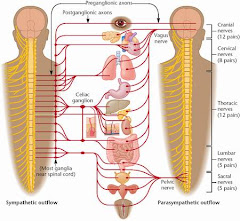"About Soul Lightening Acupressure
Acupressure is the practice of applying hand or finger pressure to specific energetic or conductive points on the body. It is based upon the same ancient principles as the art of acupuncture, except that it uses the softer form of curved finger pressure on the points. Recipients of this work report feeling nurtured and supported.
In the spirit of Seva (compassionate service) we believe the individuals who receive and/or practice this deep and effective tool for healing will have a positive, healthy impact upon their families, their communities, and the world. As more and more individuals come into harmony within their own being, the balancing effect on their families and their communities expands as well."
Zero Balancing
"Developed by Fritz Smith, MD in the early 1970s, Zero Balancing is a powerful body-mind therapy that uses skilled touch to address the relationship between energy and structures of the body. Following a protocol that typically lasts 30 to 45 minutes, the practitioner uses finger pressure and gentle traction on areas of tension in the bones, joints and soft tissue to create fulcrums, or points of balance, around which the body can relax and reorganize.
Zero Balancing focuses primarily on key joints of our skeleton that conduct and balance forces of gravity, posture and movement. By addressing the deepest and densest tissues of the body along with soft tissue and energy fields, Zero Balancing helps to clear blocks in the body’s energy flow, amplify vitality and contribute to better postural alignment. A Zero Balancing session leaves you with a wonderful feeling of inner harmony and organization."
Zero Balancing focuses primarily on key joints of our skeleton that conduct and balance forces of gravity, posture and movement. By addressing the deepest and densest tissues of the body along with soft tissue and energy fields, Zero Balancing helps to clear blocks in the body’s energy flow, amplify vitality and contribute to better postural alignment. A Zero Balancing session leaves you with a wonderful feeling of inner harmony and organization."
On Pierre Janet (1859-1947)
"In presenting his model of the mind, Janet distinguished between two different ways that mind functions: activities that preserve and reproduce the past and activities which are directed towards synthesis and creation (i.e., integration). [emphasis added] Normal thought is produced by a combination of the two acts which are interdependent and regulate each other.
Integrative activity "reunites more or less numerous given phenomena into a new phenomenon different from its elements. At every moment of life, this activity effectuates new combinations which are necessary to maintain the organism in equilibrium with the changes of the surroundings." 1n short, this function organizes the present. Reproductive activities only manifest integrations that were created in the past.
Janet felt psychological automatism was best studied in individuals who exhibit it in extreme degrees -- psychiatric patients suffering from hysteria. In them, the integrative activity is significantly diminished, causing the development of symptoms that appear as magnifications of the activity designed to preserve and reproduce the past. Janet discovered that most of them suffered from unresolved (and therefore, dissociated) traumatic memories. In this population he studied catalepsy, paralysis, anesthesia, contractures, monoideic and polyideic somnambulisms, and successive existences (as he then termed multiple personalities). His analysis represented a departure from classical psychology which made a sharp distinction among intellect, affect and will."
Integrative activity "reunites more or less numerous given phenomena into a new phenomenon different from its elements. At every moment of life, this activity effectuates new combinations which are necessary to maintain the organism in equilibrium with the changes of the surroundings." 1n short, this function organizes the present. Reproductive activities only manifest integrations that were created in the past.
Janet felt psychological automatism was best studied in individuals who exhibit it in extreme degrees -- psychiatric patients suffering from hysteria. In them, the integrative activity is significantly diminished, causing the development of symptoms that appear as magnifications of the activity designed to preserve and reproduce the past. Janet discovered that most of them suffered from unresolved (and therefore, dissociated) traumatic memories. In this population he studied catalepsy, paralysis, anesthesia, contractures, monoideic and polyideic somnambulisms, and successive existences (as he then termed multiple personalities). His analysis represented a departure from classical psychology which made a sharp distinction among intellect, affect and will."
Subscribe to:
Posts (Atom)






